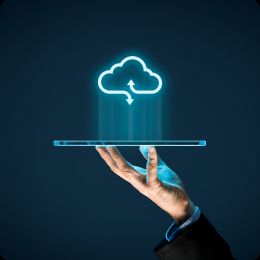Displacement Based
Displacement meters (or Positive Displaecment or PD meters), as their name suggests, relies on proportional displacement of a measurement element based on volume of water passing. This brings in a high level of accuracy in a properly calibrated meter, because the proportionality is physically linked to volume. Inherently, this means water/liquid should not pass when the measuring element isn't moving. That in turn means that such meters are easily blocked due to impurities, and results in supply disruption. Typically these meters are employed below 2 inches size, and goes to very small sizes like 1/4 inch.
Two common types of PD meters are Oscillating Piston and Nutating Disk.
Oscillating Piston
Nutating Disk
Since these meters work based on water "pushing" the measuging element, pressure drop is expected to be higher on these devices.
Velocity Based
There are several velocity based metering methods, and they all depending on having a known internal capacity which is applied to the measured velocity to arrive at volume.
Multi-Jet & Single-Jet Meters
These meters work by creating a jet of water through a port, and impacting an impeller to rotate it and thus measure velocity. Because of the jet formation pressure can potentially drop, but accuracy improves. Multi-jet, as it has multiple ports impacting the impeller, can maintain accuracy at relatively lower flow rates also.
Turbine Meters
Turbine meters offer among the lowest resistance to flow, and hence low pressure drop. Also, these are ideal for low to large diameter pipes. In a conventional manual metering setup, turbine meters are hard to calibrate at low flows for accuracy as it may not be linear. But in electronic meters, accuracy can be very high in these meters by curve-fitting to the flow characteristics of the turbine.
Electronic turbine meters work via Hall Effect sensors, which are very sensitive and accurate to magnetic movement.
Ultrasonic Meters
Ultrasonic meters are yet another type of velocity meters that use one or more ultrasonic transducers to pass sound waves through the fluid to gauge the velocity by using Doppler effect or Transit Time. There are several types of ultrasonic meters and firing methods. Models that use reflectors can cause pressure drop as they cover 30-60% of the flow area. Mdels without reflectors and also clamp type models will not cause pressure drop.
Mag Meters
Mag Meters or Electromagnetic meters are one more velocity based meter type where there are no elements within the pipe. These depend on electromagnetic properties to determine velocity. As there are no elements inside, these are ideal for water with impurities and suspended particles.
Comparison Table
| Meter Type | Method | Pros | Cons | Application |
|---|
| PD | Positive Displacement - water physically pushed measuring element proportionate to volume | - Accurate | - Prone to blocks
- Up to 2" only
- Pressure drop | Fuel, Residential |
| Jet | Velocity measurement by jets on an impeller | - Multi-jet is accurate | - Sensitive to impurities
- Up to 2" only
- Pressure drop | Residential |
| Turbine | Velocity measurement by frequency of rotation of a turbine when fluid passes | - Accurate
- Very low pressure drop | - Moderate range | Residential & Industrial |
| Ultrasonic | Velocity measurement by doppler effect or travel time of sound waves | - Accurate
- High range | - Large reflector in some models
- Costly | Residential & Industrial |
| Mag | Velocity measurement by EM effect like induction | - No components on path of flow
- Works with impure/soiled water | - Prone to interference
- Costly | Waste & Mixed fluid |
Method of Aggregation
Apart from the metering technology, you should pay attention to the aggregation method used. This could be mechanical, electronic or hybrid.
Mechanical
Some of the meters cause the measuring element to push a reading display physically (through gears mechanism etc) within the meter. These meters have the advantage of zero outside dependency and being cheap, but are prone to errors as the means to compensation are pretty limited in these meters.
Electronic
Electronic meters take some kind of a signal (like a magnetic pulse, timing difference, voltage variation) and then convert that to velocity and in turn into volume. These meters have firmware/code running within and modern meters in this category are capable of advanced curve fitting to ensure accuracy. Due to the electronics involved, these meters tend to be slightly more costly in comparison.
Hybrid
This is a bit like worst of both worlds. Readings are actually mechanical, but a retrofit electronic device is mounted to convert the readings to electronic.
Smart Meters
Smart meters are hybrid or electronic meters with a way to communicate the readings out and (optionally) perform analytics on these readings at a larger external system. There are various channels used to communicate out, prominently the ones listed below.
BLE / Bluetooth
Bluetooth Low Energy (or Bluetooth) based smart technology meters have a very low range. These may be wireless or wired based on power supply, as the communication is wireless. This is not a recommended communication method for meters as reading aggregation often require several gateways or someone to physically walk near the meters. This means near real-time readings are not sent online.
RS485 / Modbus
RS485/Modbus is a wired communication protocol, and typically power supply also is wired. This is an industry-grade networking for local area communication, and is used widely worldwide. Due to its popularity, it is easier to find compatible interoperable devices from across vendors. This is recommended in clustered areas like apartments and commercial buildings.LoRa
Long Range (LoRa) spread spectrum communication method is a wireless communication technology with a high range and low energy needs. These are ideal for meters deployed in properties spread over large land area (like villa communities or a large factory).
Proprietary
While the above three are standard protocols, some meters use proprietary protocols to communicate. It is best to avoid such methods or ask the vendor for a standard protocol option to ensure there is no vendor locking.
Conclusion
There is no one meter fits all recommendation for fluid measurement. You can consult an experienced engineer to choose the right meters for you. We at Aegir are always happy to help you decide on the right equipment.


